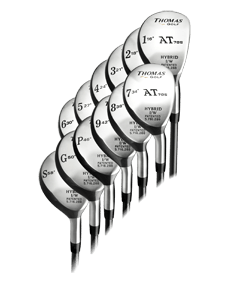
There needs to be a lot of thought put into this kind of shot. Why? Simple – a lot can go wrong. If you attempt the wrong kind of shot from a divot, your ball could head off in some unexpected direction, and you could quickly find yourself wasting several strokes on a single hole. Course management is always important in golf, but it is even more important when you find yourself in this kind of situation.
The first thing you should have in mind when you find your ball in a divot is playing it safe. You are already in a bad spot, and you don’t want to make things worse. As a good rule of thumb, pick a shot that you are confident will put you in a good position for your next swing. You don’t have to pull of an amazing shot out of the divot – you just need to position your ball so the shot you hit after the one from the divot can be a great one.
To help you make the right decision as you think about how to proceed from your divot lie, we have assembled the following points.
-
- Don’t expect the ball to fly high. If the shot you are thinking of playing is going to require you to get the ball high up in the air, you may want to think again. It is going to be extremely difficult to hit a high shot, even if you have the design of a hybrid club on your side.
- A hybrid may be easier to elevate from a divot than some of your irons, but that doesn’t mean you are going to hit a shot that soars through the sky and comes down softly. This is still a bad lie we are talking about, and you are still unlikely to hit anything other than a low line drive.
- Slash your distance expectations. Along with expecting to hit a low shot, you should also plan on hitting the ball quite a bit shorter with your hybrid than you would from a good lie. For instance, if you normally get 200-yards out of your hybrid, you may only get 150-yards or so on this shot.
- Of course, the actual distance you get from the shot is going to vary based on a number of factors. Sometimes, you may get closer to your full yardage, while in other situations you may be down as low as 50%. With experience, you will get better and better at predicting how much distance you are going to lose as a result of the lie.
- Expect unusual patterns. It should not be surprising if the ball comes out of a divot and flies in an unusual way. For instance, you may hit a draw when you are used to hitting a fade, or the ball may be pushed way out to the right, even if that is a shot you rarely hit. Simply put, it’s hard to predict where the ball is going to go when it comes out of a divot. What does this mean for your shot planning?
- Simple – you need to give yourself as much margin for error as possible. Aim for parts of the course with plenty of space, so you can be off on your aim and still get away with the shot. If there isn’t anywhere you feel comfortable aiming with your hybrid club, consider just pitching the ball out of the divot so you can play your next shot from a good lie (hopefully).
Being cautious isn’t always easy in golf, as it is tempting to play an aggressive shot in the hopes of pulling off something incredible. More times than not, however, that aggressive shot is going to be a disappointment, and it will cost you at least a stroke or two.
It is especially important to be cautious when dealing with a bad lie, such as when your ball is sitting in an old divot hole. While a hybrid club can help you get out of this predicament, you shouldn’t expect the hybrid to work miracles. It’s still tough to play a good shot in this situation, so be smart and remain patient to the greatest degree possible.
Update:
Planning your shots out of divots is an essential skill to master in golf, as hitting from a divot can present unique challenges on the course. Here are some golf tips to help you navigate shots out of divots, along with answers to common questions:
Golf Tips: Planning Your Shots Out of Divots
- Assess the Divot: Inspect the divot to determine its depth and the lie of the ball. Assess the divot's direction and whether there are any grass clumps or debris affecting the shot.
- Select the Right Club: Choose a club that can help you get out of the divot without digging it deeper. Consider using a club with a steeper angle of attack, like a wedge or short iron.
- Adjust Your Stance: In a divot, position the ball back in your stance to ensure a clean strike and avoid digging too much turf.
- Take a Shallower Swing: To avoid digging into the divot, make a shallower swing with a controlled follow-through. Focus on striking the ball cleanly with a descending blow.
- Focus on Ball-First Contact: Concentrate on making solid contact with the ball first, and then take the divot after impact.
- Minimize Backswing Length: A shorter backswing can help control the trajectory and prevent excessive turf interaction.
- Avoid Overcompensation: Resist the temptation to overswing to compensate for the divot. Maintain a smooth and controlled swing to increase the chances of a successful shot.
- Play for Extra Roll: Anticipate a lower ball flight due to the divot and plan for some extra roll upon landing.
- Keep a Positive Mindset: Maintain a positive attitude and focus on executing the shot with confidence.
- Practice Divot Shots: Regularly practice shots from divots during your practice sessions to improve your ability to handle such lies on the course.
Q&A:
- Q: How do I know if I can take a divot with my shot? A: When hitting from a fairway divot, aim to make ball-first contact without excessively digging into the turf. This ensures you take a shallow divot and avoid the risk of thinning the ball.
- Q: Can I play a normal shot from a fairway divot? A: Playing a normal shot from a divot can be challenging. It's best to adjust your setup and swing to minimize the impact on the divot and maximize ball-first contact.
- Q: What if the divot is deep and the ball is sitting down? A: In this scenario, you may need to play a more conservative shot, focusing on getting the ball back into play rather than attempting an aggressive shot.
- Q: Should I take a divot when hitting from the rough? A: In the rough, you may encounter varying lies, including grass that's too thick to take a divot. Adjust your swing accordingly to pick the ball cleanly from the rough.
- Q: Should I use a different club when hitting from a fairway divot? A: A club with more loft, such as a wedge or short iron, can be helpful for better ball-first contact and control.
- Q: How do I avoid hitting the ground before the ball when the ball is sitting down in a divot? A: Position the ball back in your stance, and focus on making a shallower swing to minimize the risk of hitting the ground before the ball.
- Q: Can I use a fairway wood from a divot? A: Fairway woods have a shallower angle of attack and may not be ideal for hitting from divots. A wedge or short iron is usually a better choice.
- Q: Can divots be used as a training aid for iron play? A: Yes, practicing shots from divots during your training sessions can help you develop better ball-first contact and improve your iron play.
- Q: Should I be more aggressive or conservative when hitting from a divot? A: Be more conservative when hitting from a divot, especially if it's deep or the ball is sitting down. Focus on making clean contact and getting the ball back into play.
- Q: How do I adjust my setup for a divot shot? A: Position the ball back in your stance, lower your hands slightly, and maintain a slightly steeper angle of attack to handle the divot effectively.
- Q: How can I improve my divot shots during practice? A: Practice hitting from divots on the driving range or practice area. Focus on the adjustments mentioned above to improve your consistency with these shots.
- Q: What mental approach should I take when hitting from a divot? A: Stay positive and confident in your abilities. Focus on executing a controlled swing with ball-first contact, and avoid dwelling on the challenging lie.
By incorporating these tips and answers to common questions into your golf game, you'll be better prepared to handle shots from divots with greater confidence and success. Remember to practice regularly and maintain a positive mindset to improve your performance on the course.





